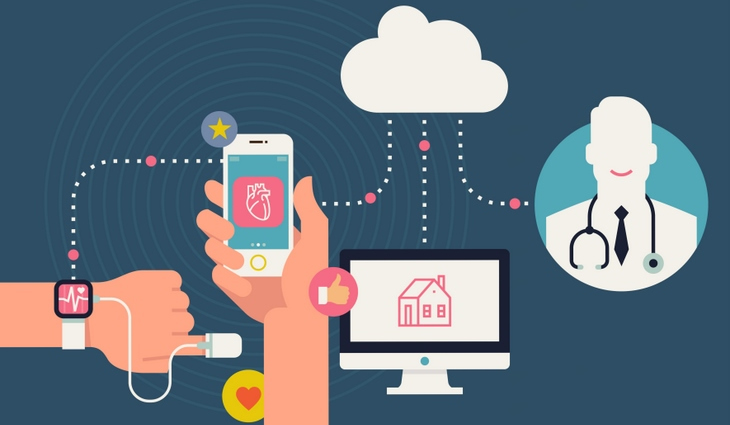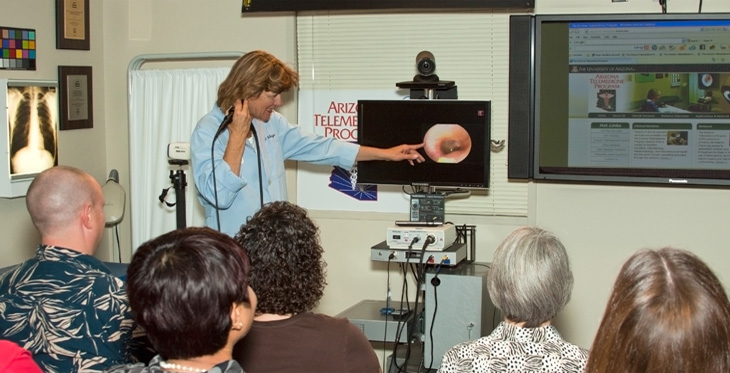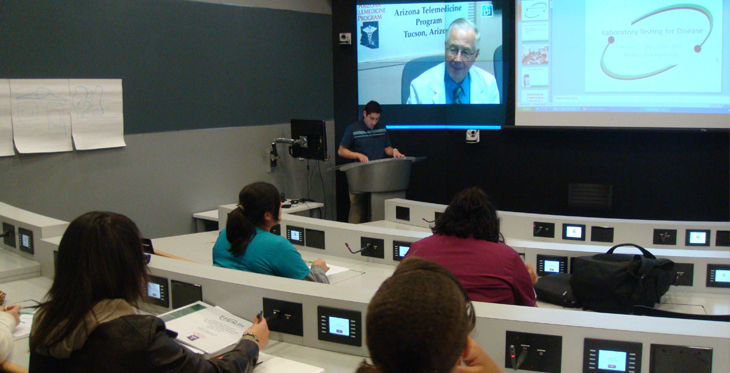From connected refrigerators that display the latest family photos to connected buttons that instantly place an order for laundry detergent when you press them, the Internet of Things is vast and growing rapidly. Health care is not immune to this new connected fever. Health care leaders and innovators are quickly developing connected health things that offer powerful new ways to care for people.
The Arizona Telemedicine Program Blog, Category: Technology
Like most Americans, Janet Major is thankful today for her family, friends, and all the good things in her life. One of those good things is working at a job she loves.
Janet is associate director for facilities and distance learning outreach for the Arizona Telemedicine Program (ATP). She’s been with ATP since 1997, when the first telemedicine site was installed at what is now called Maricopa Community Health Center in Nogales, AZ. Janet was on the team that installed it.
Over the past 18 years she has traveled throughout Arizona, helping to grow the ATP network that now links with more than 150 healthcare sites statewide. She also serves as vice chair, and chair elect, of the American Telemedicine Association’s Technology Special Interest Group, and is a board member representing telehealth with the U.S. Distance Learning Association.
Arizona Telemedicine Program's T-Health Institute opened in 2003 on the University of Arizona's Biomedical Campus in downtown Phoenix. Its mission: to offer telemedicine and telehealth training, and to serve as a prototype e-classroom of the future.
The Institute is fulfilling its mission. More than 20 different organizations have used the amphitheater over the past 12 months, and not all are about medicine and health care.
In 2006, Banner Health made the decision to equip every one of their ICU beds with an eICU system that provides round-the-clock, “remote” care to critical care patients. Banner Telehealth’s eICU operations centers, located in Mesa, Ariz., Denver, Colo., Santa Monica, Calif., and Tel Aviv, Israel, has helped reduce patient mortality and shortened ICU stays.
In 2013, Banner took another step toward state-of-the-art intensive care, by implementing a tele-echocardiography system to relay patients’ echocardiographic images to the eICU in real time. This was achieved by training respiratory therapists to obtain the images and project them in real time to the tele-ICU physician via the tele-ICU Camera.
Internet and Wirelessly Connected Medical Devices (“Devices”) are a cybersecurity concern of the Food and Drug Administration (FDA) as evidenced by guidance it issued in October 2014. The FDA Guidance does not have the force of law—but is highly influential in the medical device industry. Likely, failure of compliance will delay or prevent FDA approvals of such Devices.




